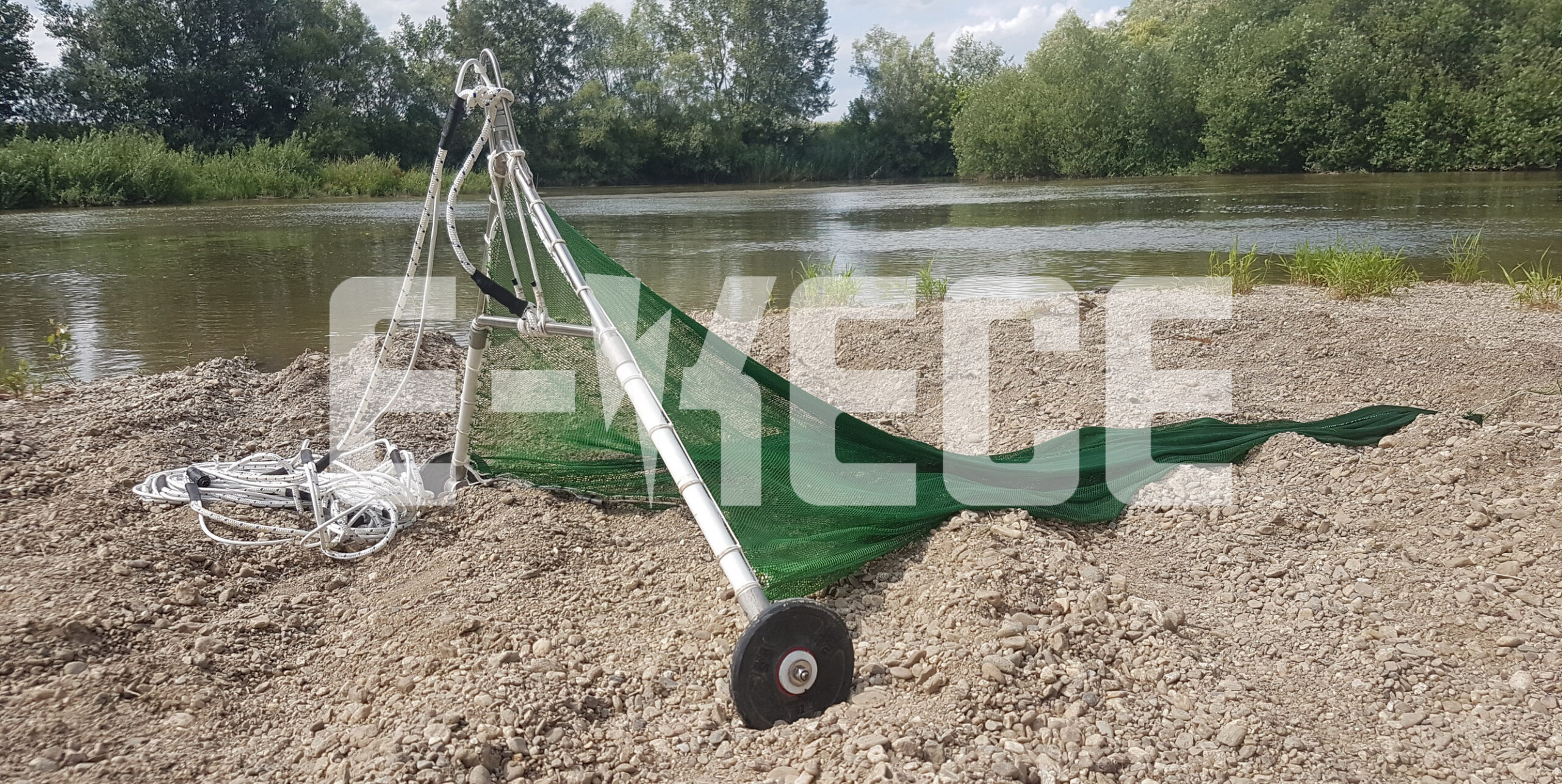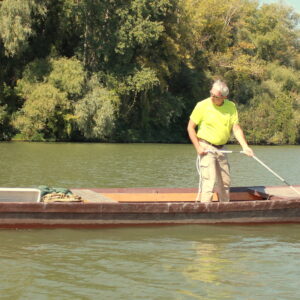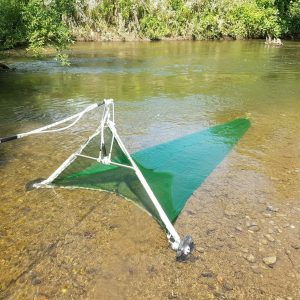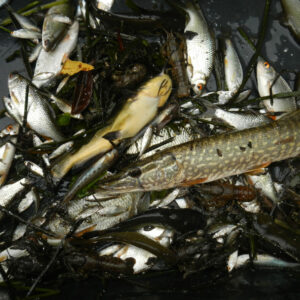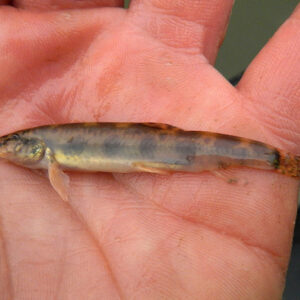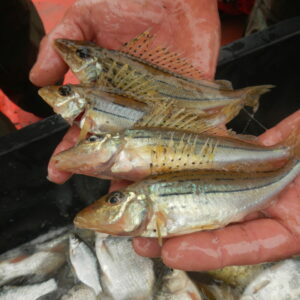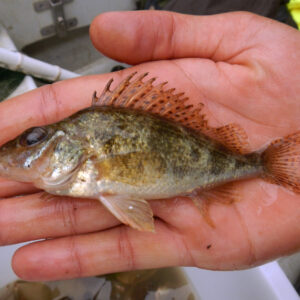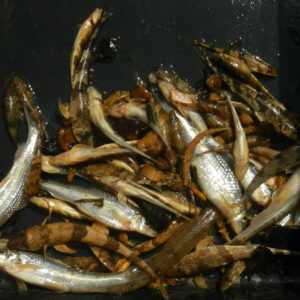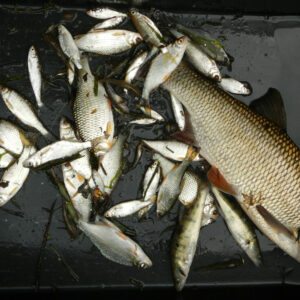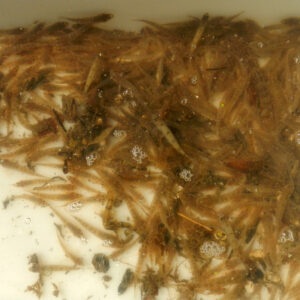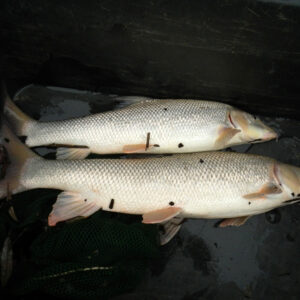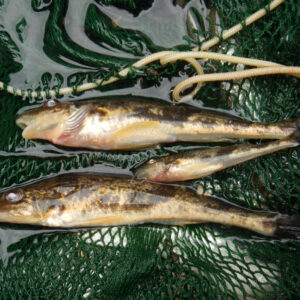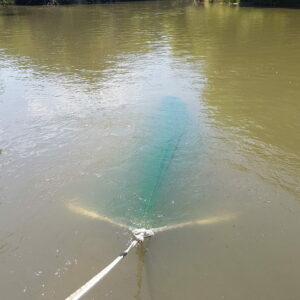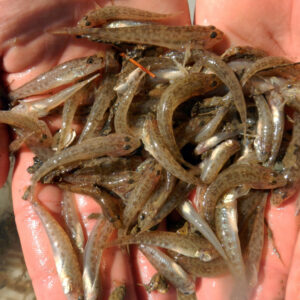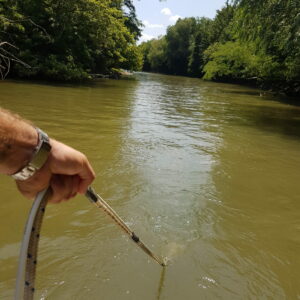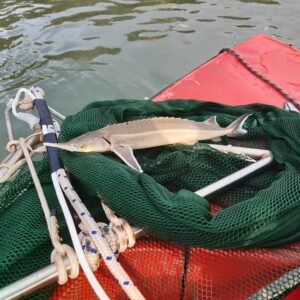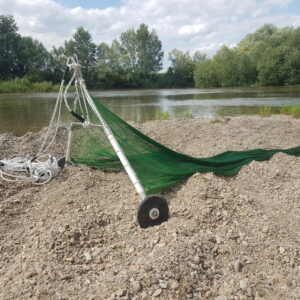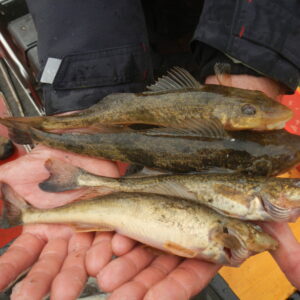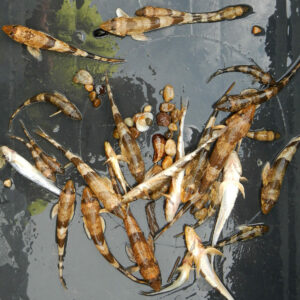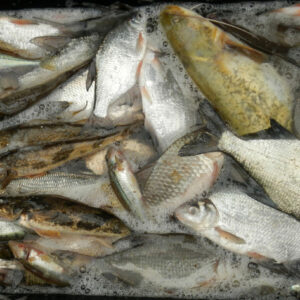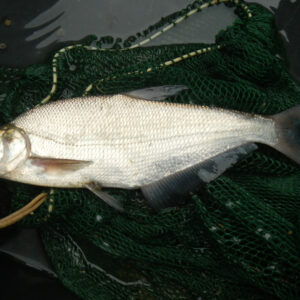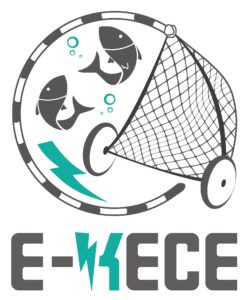
The electric benthic trawl (E-kece®)
Justification for the development of our fishing gear
Hungary’s joining the European Union in 2004 made the adaptation and further development of numerous examinations and research methods as well as their adaptation to Hungarian circumstances necessary and possible in the field of environmental protection and nature conservation. Before that, there was no demand, support or funds for such examinations and research methods in Hungary.
Nowadays the electrofishing for research purposes (the examination of the composition and quality relations of the fish fauna) is done routinely in Hungary and abroad alike, usually with methods appropriate for on-shore and near-shore sampling in middle-sized and bigger rivers. The main limitation of this otherwise effective method is the depth of the scanned water area because in waters deeper than 1.5 metres the fish near the bottom are hard to catch or cannot be caught at all. This is why some of the benthic fishes (fish species) aren’t detected during the examinations, or are significantly underrepresented in the samples compared to the real mass relations of the water area. This way, however, surveys do not always provide a real picture of the species groups and the dominance relationships.
The survey and monitoring of deeper riverbed sections in relation to fish communities as well as certain macroscopic invertebrate species groups has been hitherto unsolved and was limited to the shore (littoral) region and to a depth of 1.5 to 2 metres. This is why our company, Globe-Ecology Ltd. and the experts cooperating with us aim at developing and improving a research device which enables professionals to survey and monitor the deeper water areas and thus providing a solution to the aforementioned problem.
We started the development with the aim that in order to solve the above mentioned sampling and surveying problems we will create the prototype of a gear whose operation combines the operating principle of electrofishing device used in the survey of fish stocks with the operating principle of the benthic trawls used in traditional fishing and thus will be suitable for the quantitative survey stocking and examination of fish communities as well as certain macroscopic invertebrate species groups communities living in the deeper areas of big rivers as well as certain invertebrate species. Another important development aspect was that the power supply of the gear should be compatible with that of the commercially available electrofishing device (e.g. Samus, Hans-Grassl), that is, the developed gear could be connected as a periphery to the central unit of these devices. Another related goal was the elaboration and publication of the methodology based on the test results obtained through the prototype as well as of the sampling protocol that can be adjusted according to the type of the running water in relation to groups of fish as well as certain invertebrate species.
Operating principle of the electric benthic trawl
Electrofishing is based on the principle that an electric field is generated around the two electrodes put in the water (the anode and the cathode namely). The fish entering this field will swim towards the anode (galvanotaxis or “anode reaction”), then in the vicinity of the field its muscles will slacken (galvanonarcosis) and thus can be collected with a scoop-net. With the numbness gone (which, depending on body size, may last from a few seconds to 1 or 2 minutes) the fish will be able to swim away unharmed! (This is also justified by the fact that this method is also used in practice for example for catching breeding fish or saving offspring.)
Although earlier electrofishing was also used in mass fishing, we will ignore that and will only focus on fishing for research purposes.
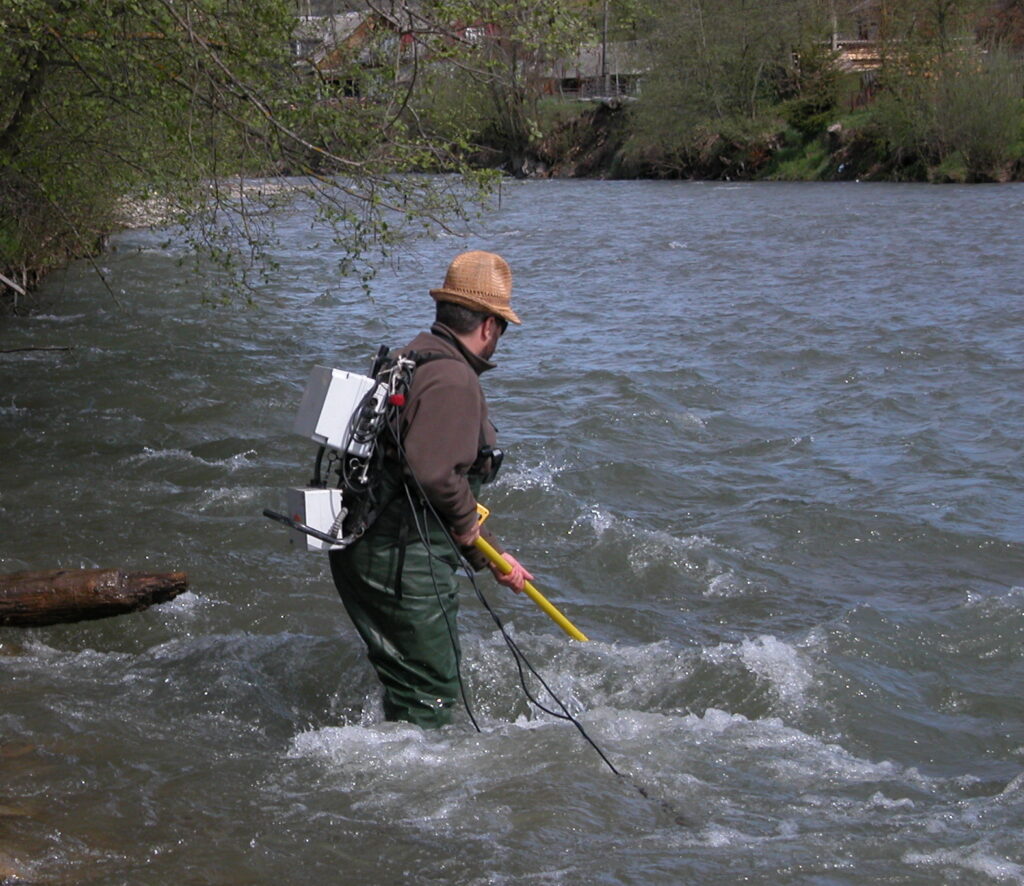
Figure 1. Near-shore electrofishing for research purpose
During on-shore (near-shore or shallow water) fishing, the anode (the positive electrode) is a scoop-net head (usually rounded) made of non-corrosive metal fitted to a 2 to 4 metre long bar, and the cathode (the negative electrode) is a copper wire. With this equipment we can fish standing in the water wearing insulating waders and using a generator which is carried in a rucksack (Figure 1) or is floated on the water, or we can do it from a boat.
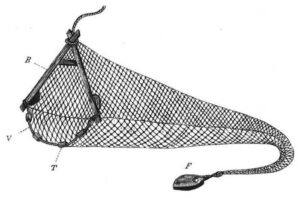
Figure 2. The traditional „hosszúkecze” (“long kece”)
Source: O. Herman: (1887): The Book of Hungarian Fishing
The gear developed by us is the upgraded version of an ancient hungarian fishing gear, the “kece”, or to be more precise the “long kece” (Figure 2.). Actually this is the new type of periphery of the electrofishing device, in which the role of the anode is taken over by the upper part of the triangle shaped frame (more precisely by the approx. 60 cm long upper sections of the edges, while the copper wire band weighed by lead, which is the lower edge of the triangle, serves as the cathode. The part of the triangle shaped frame between the anode and the cathode is made of insulating material (glass fibre), at the bottom of the frame weighed wheels are used to make sure that the trawl is kept on the bottom and that it can roll along the bottom. The base of the isosceles triangle which provides the frame is about 1.5 metres long, however, the weighed copper wire band is somewhat longer so that it can compensate for the unevenness of the bottom and it can get the fish “lying” at the bottom as a result of the electric daze as well as other non-benthic organisations (crayfish, snails and mussels) into the trawl, too. The triangle is about 1.2 metres high. The mesh size of the trawl is 0.6 cm, its shape is a long sack (about 3 metres). The mouth of the trawl which gets thinner towards the end is open, however, when it is towed, we close it with the cord of the sack-weight (about 1 kg, round) used for tensing the trawl and thus close the sack of the trawl.
The power source (electrofishing device) is connected to the trawl-net via a two-core flex cable which is fixed not too tightly to the towing rope of the gear by a shrink tube. The length of the rope can be adjusted to the water depth, taking into consideration the fact that when towing, the rope leads from the boat to the gear at an angle of approximately 45 degrees. Under the conditions in Hungary, the use of a rope (and cable) longer than 25 metres is not justified. The rope has to be sufficiently strong so that the gear can be freed if it gets stuck, even if it means it is slightly damaged (e.g. the trawl rips or the weight is lost).
Use and field of application of the gear
The original “kece” was used in running waters, and we developed our trawl by optimising it for use in different types of rivers. Based on the experiences gained so far, this gear is most suitable for researching in middle-sized and big rivers (as well as equivalent canals). Smaller rivers do not have the water depth necessary for the towing of the kece, and these river types can be properly examined via on-shore and near-shore electric research fishing (from a boat or by wading). The use of the e-kece is justified in waters deeper than 1.5 metres. We have not met any depth obstacles regarding the other end of the scale so far. Another limiting factor is the speed of the waterflow: in bigger waters where the flow is very strong, and thus the obstacles (logs, bigger rocks) that may be found in the riverbed may trigger dangerous situations, to say the least they definitely make work much more difficult.
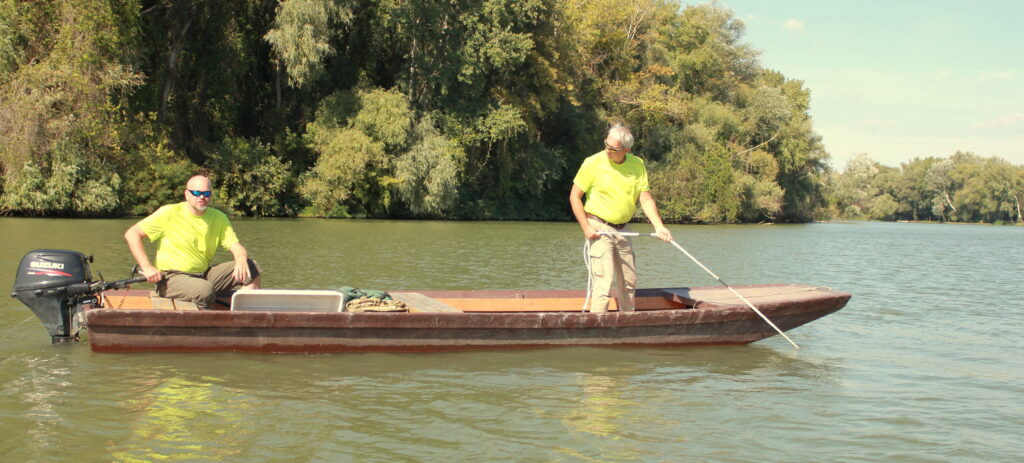
Figure 3. The towing of the kece
The sampling itself is done in a smaller or bigger boat: the vessel is reversing downstream (Figure 3). At a low speed, the operator standing in the front end of the boat lowers the gear to the bottom, then, by holding the rope in his hands at an angle of 45 degrees, pulls the gear (downstream) while controlling it continuously. Meanwhile the driver of the boat follows the direction previously set for sampling and controls the speed of the boat. The speed must be chosen in a way that the gear moves slightly faster than the flow. If the speed is too low, the fish will not get in the sack because the flow will take them away and the trawl will not take up the necessary shape, either; if the speed is too high, the gear will lift up from the bottom due to the drag caused by the movement of itself and the towing rope. If the speed is chosen correctly, though the rope the operator can feel the wheels rolling along the bottom, and, with some experience, they can also get some information on the quality (composition and unevenness) of the river bottom.
The operator switch on the power source by its footswitch and keeping it working throughout the towing process. However, this does not mean that the fish caught in the trawl are continuously affected by the electricity, because by drifting into the end of the 3-metre long sack they will leave the range of the electrodes and thus the possible damaging effects of a prolonged electric shock are eliminated.
The length of the towing depends on the characteristics of the river. Based upon our experiences gained so far, in a river this distance may range between 250-500 metres depending on the size of the river in question, however, we are continuously experimenting with the ideal towing distance (which is adapted to the type of the water).
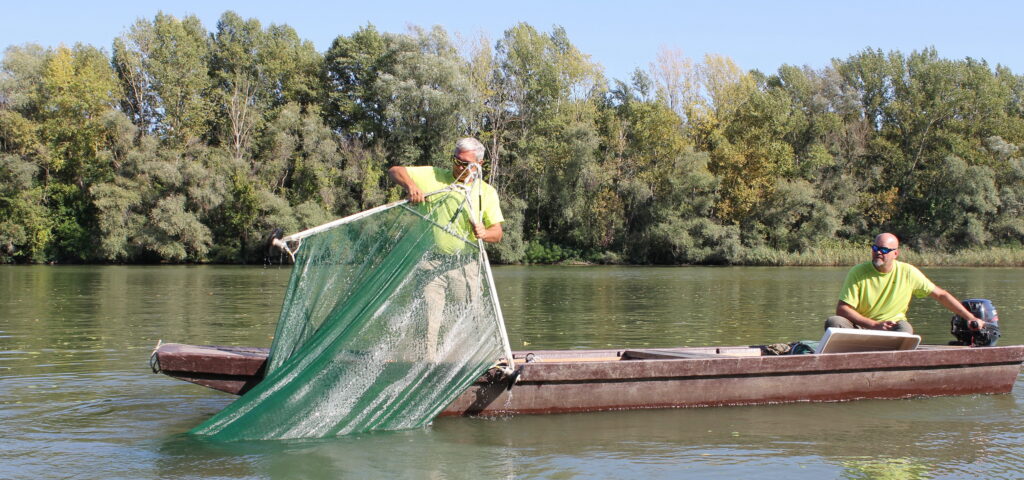
Figure 4. ”Surfacing” the “kece”
After achieving the desired towing (sampling) length, the operator pulls the trawl to the boat while moving continuously in order to keep the trawl tense), then lifts the frame into the boat and collects the sack as well (Figure 4) slowly (and) shaking it in order to ensure all the fish and other animals end up in the bottom of the sack. At the end of the procedure the operator opens the mouth of the trawl by untying the cord of the weight and pours the animals into a box or onto a tray which has been prepared (Figure 5). The box of tray should contain some water in order to prevent skin damage. After this the two people who do the sampling thoroughly inspect the content of the box (Figure 6) and records the detailed data (practically with a voice recorder and taking photographs if necessary), while continuously putting the fish and other animals (crayfish, snails and mussels) back into the water.
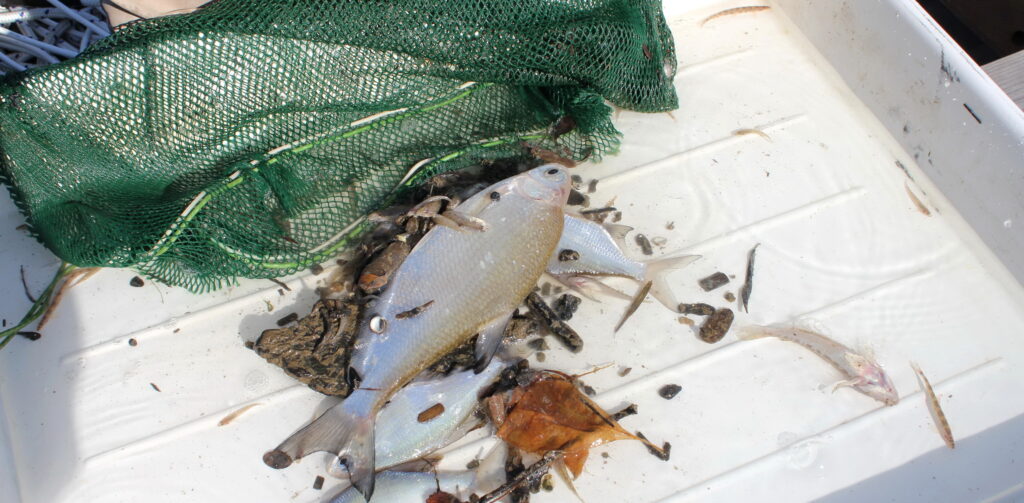
Figure 5. Emptying the sack of the kece
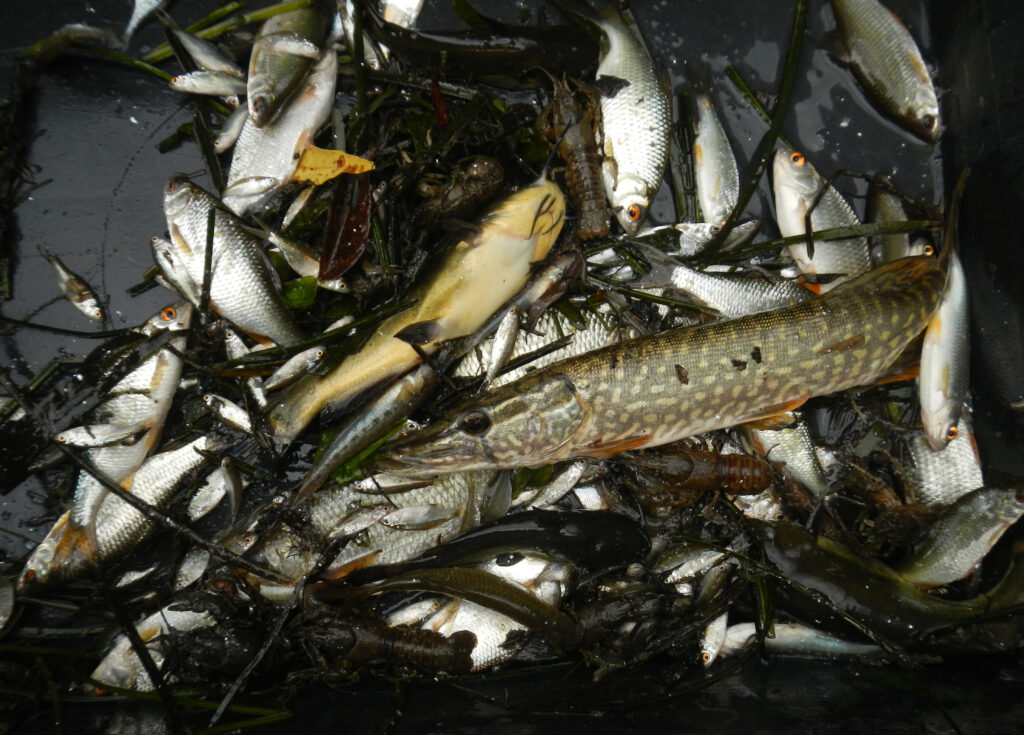
Figure 6. The catch in the box: fish and crayfish
In order to experiment and gain more experience, we have tested the gear in still water as well. Obviously, it could only be done in waters where the soft sediment on the bottom is not too deep because once the trawl is filled with mud, towing and lifting out might become impossible. The trials carried out on Lake Balaton showed that the benthic trawl can also be used in still waters with the above mentioned limitations. Based on experience gained on certain rivers we wish to add that the presence of rich weed also makes the use of the gear impossible or makes it much more difficult.
Contact:
Béla Kiss PhD. manager
Globe-Ecology Ltd..
+36 30 749 85 25
polesz70@gmail.com
Péter Olajos assistant
Globe-Ecology Ltd.
+36 30 903 13 44
olajos.hnp@gmail.com

